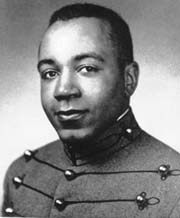Military Medal And Award Displays
 |
Copyright © Since 1988
Korean War Links
 Black Combat Units In Korean War Action
Black Combat Units In Korean War Actionby David K. Carlisle
Military Medal And Award Displays
 |
 Black Combat Units In Korean War Action
Black Combat Units In Korean War Action The Korean War (1950 to 1953) was the last American conflict involving segregated units of the arced forces, i.e. the US Army. 3 American infantry divisions -- the 25th, the 2nd, and the 3rd -- contained black combat units during 1950/51.
Among the 25th Division's 3 infantry regiments was the Army's last black 24th Infantry, the largest black unit to serve in Korea. (The 24th Infantry was also the Army's only 3-bn regiment in action during initial weeks of the war. Other American regiments 1st committed to action from peacetime occupation duty in Japan contained only 2 bns.) Accompanied by the black 159th Field Arty bn and the black 77th Engineer Combat Co, the 24th Infantry arrived in the Korean Combat Zone beginning 7-13. On 7-20 the 24th's 3rd Bn, reinforced by a battery of the 159th and a platoon of the 77th, was the 1st 25th Division element to go into action at Yechon. In an extraordinary 2-day action hailed around the world as the US' initial Korean War victory, the reinforced bn drove the enemy from the town and recaptured it at a cost of 2 Americans killed and 10 wounded in action to at least 258 enemy dead.
Subsequently, the 24th Regimental Combat Team:
The Korean War (1950 to 1953) was the last American conflict involving segregated units of the arced forces, i.e. the US Army. 3 American infantry divisions -- the 25th, the 2nd, and the 3rd -- contained black combat units during 1950/51.
Among the 25th Division's 3 infantry regiments was the Army's last black 24th Infantry, the largest black unit to serve in Korea. (The 24th Infantry was also the Army's only 3-bn regiment in action during initial weeks of the war. Other American regiments 1st committed to action from peacetime occupation duty in Japan contained only 2 bns.) Accompanied by the black 159th Field Arty bn and the black 77th Engineer Combat Co, the 24th Infantry arrived in the Korean Combat Zone beginning 7-13. On 7-20 the 24th's 3rd Bn, reinforced by a battery of the 159th and a platoon of the 77th, was the 1st 25th Division element to go into action at Yechon. In an extraordinary 2-day action hailed around the world as the US' initial Korean War victory, the reinforced bn drove the enemy from the town and recaptured it at a cost of 2 Americans killed and 10 wounded in action to at least 258 enemy dead.
Subsequently, the 24th Regimental Combat Team:
